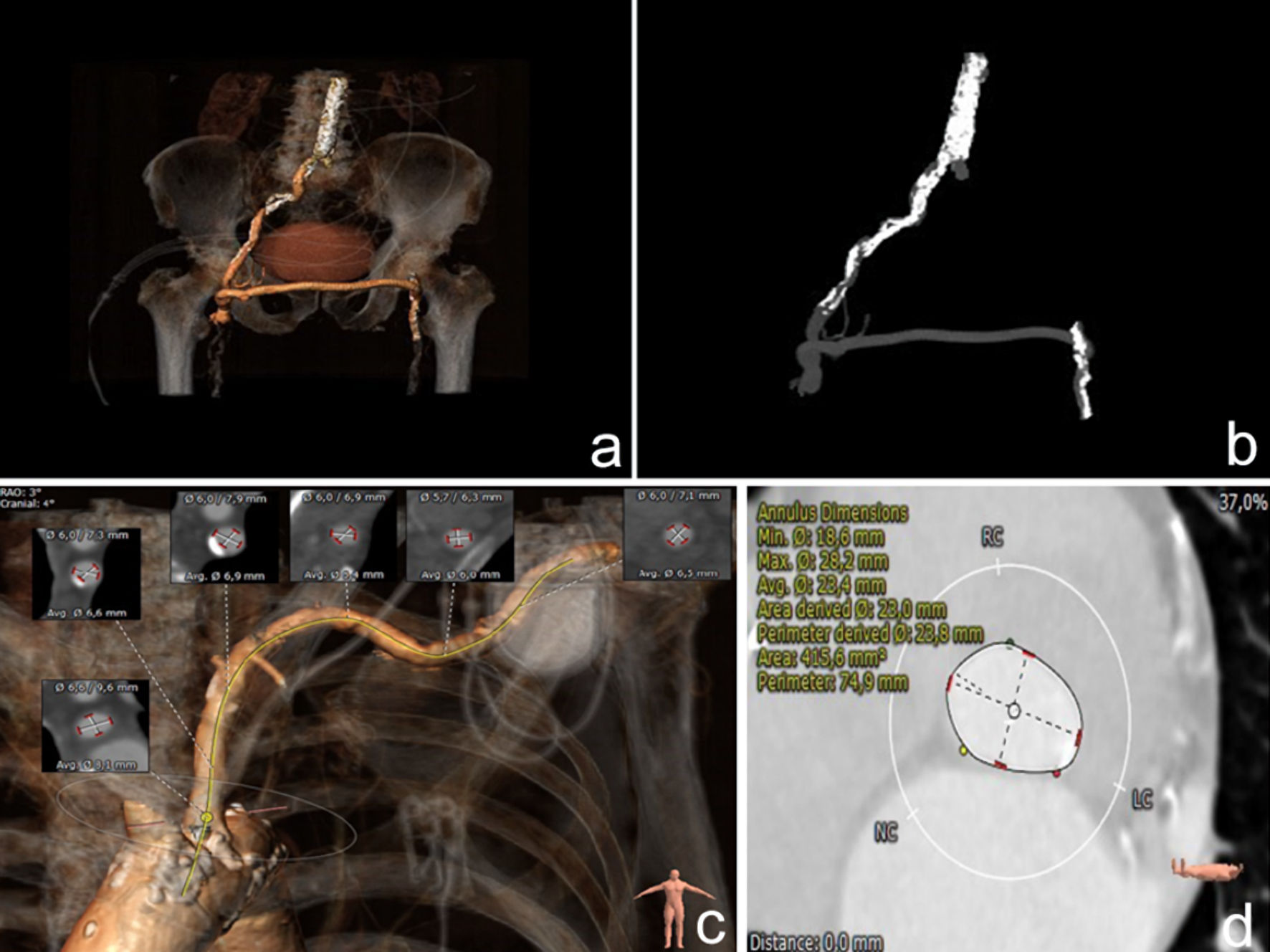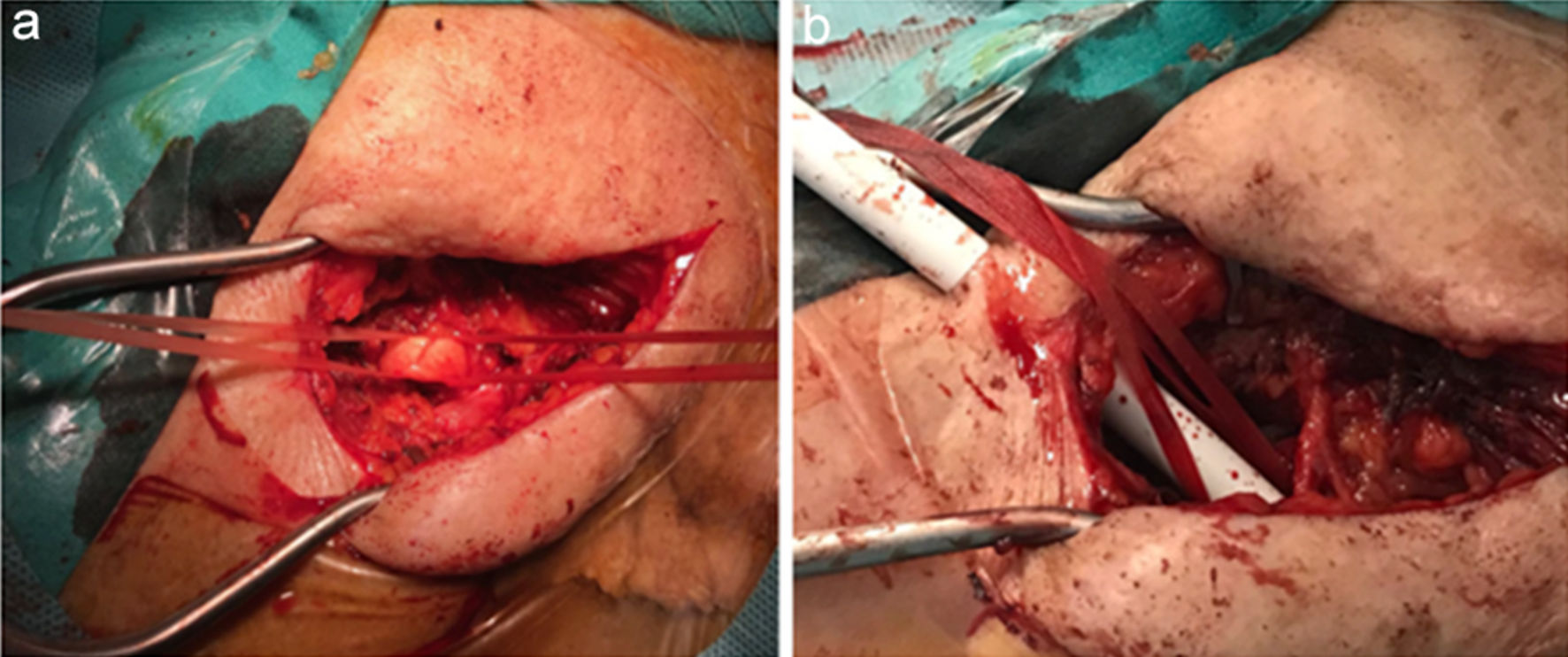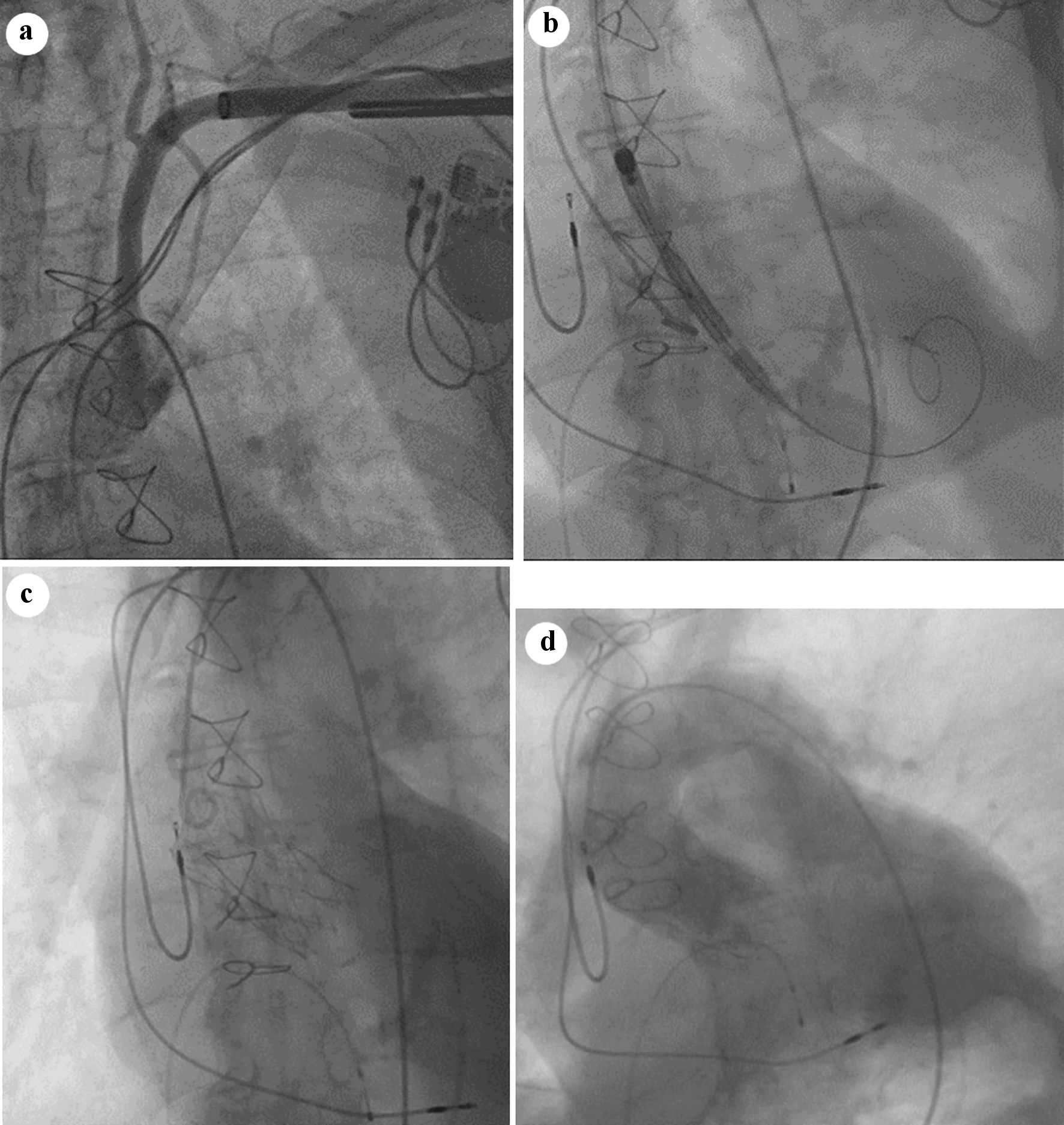
Figure 1. (a) Three-dimensional (3D) reconstruction of the aortoiliofemoral anatomy and (b) intravenous (IV) contrast image from MSCT scanning. Severe bilateral femoral artery disease with a patent femoro-femoral bypass graft and severe calcifications of the right aortoiliac artery and the descending aorta are displayed. (c) 3D reconstruction of the left subclavian artery anatomy and regional vessel diameters, with permanent pacemaker implanted beside the left acromioclavicular joint. (d) Aortic annulus perimeter from MSCT scanning. MSCT: multislice computed tomography.

